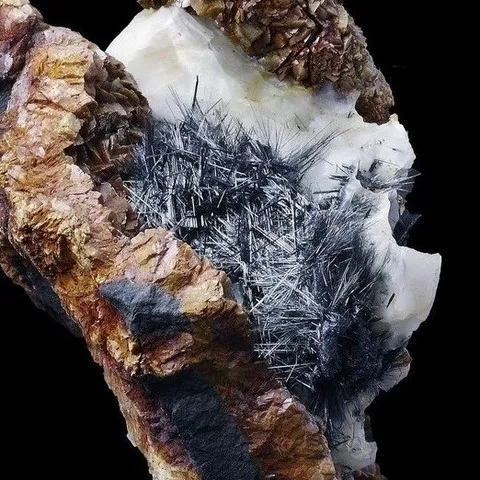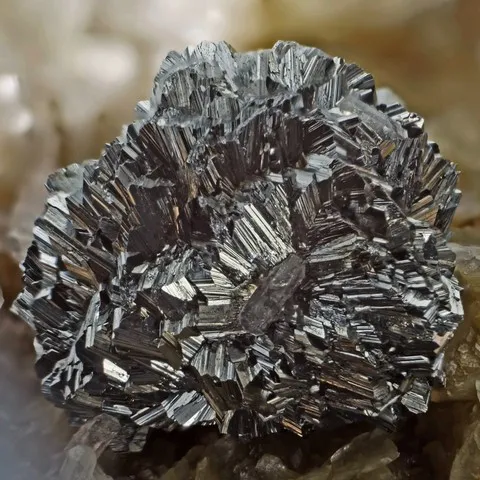What are sulfosalts in mineralogy ?
Sulfosalts : definition
They are generally quite accessory minerals of Cu, Ag or Pb (boulangerite, bournonite, semseyite, jordanite...). Only a small number of them sometimes constitute ores (enargite, Cu3AsS4 copper ore ; pyrargyrite, Ag3SbS3 silver ore...).
The term sulfosalts, however, has different meanings depending on the authors. The distinction between sulfides and sulfosalts is not always possible on simple examination of the chemical formula, and only a study of the crystal lattice then makes it possible to decide.



